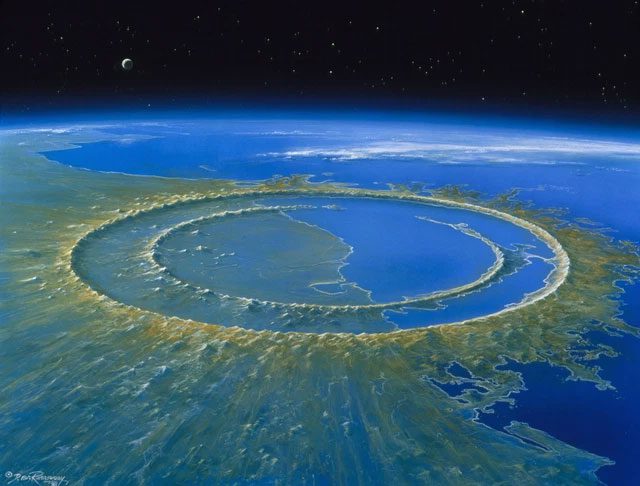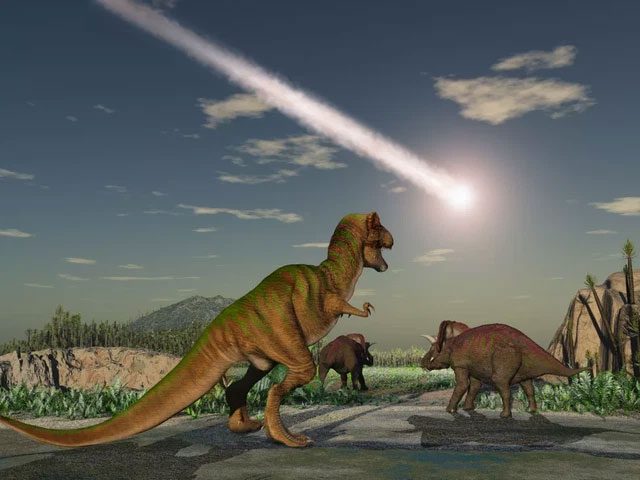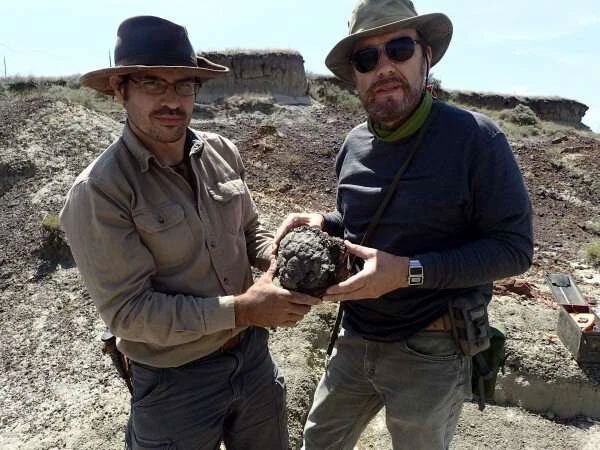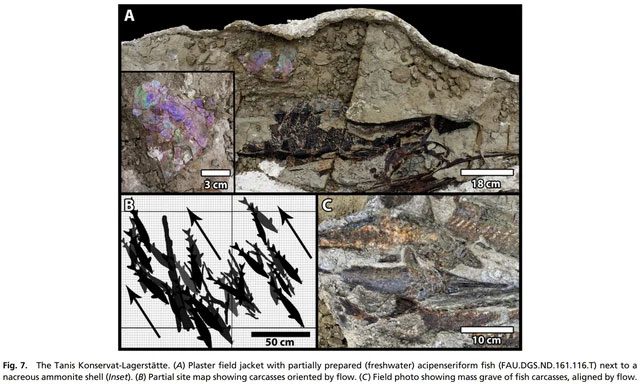66 million years ago, the Chicxulub asteroid caused the extinction event that wiped out the dinosaurs and 75% of life on Earth. A groundbreaking study has recently pinpointed the exact timing of the Chicxulub impact. Ironically or fittingly, the 165 million-year reign of the dinosaurs ended in spring, the season of new beginnings.
This research was conducted by scientists from Florida Atlantic University (FAU) in collaboration with an international team of researchers. The findings, published in the journal Scientific Reports, significantly expand our ability to track the initial stages of damage to life on Earth.

Chicxulub meteorite crater.
This is an important scientific advancement that helps us understand the massive collision that ended the age of dinosaurs. The key figures in this prominent study are two FAU scientists, Robert DePalma and Anton Oleinik.
“The time of year plays a crucial role in many biological functions such as reproduction, foraging strategies, host-parasite interactions, seasonal hibernation, and breeding patterns. Therefore, it is not surprising that the time of year for a global-scale disaster could significantly impact how it affects life in such a harsh way. Thus, the seasonal timing of the Chicxulub impact is an important question in the story of the Cretaceous-Paleogene extinction. So far, that question has remained unclear“, said paleontologist DePalma, as quoted by ScienceDaily.
For decades, it has been known that the asteroid responsible for the Chicxulub extinction event struck the Yucatán Peninsula 66 million years ago. This collision caused the third largest mass extinction in Earth’s history, significantly altering global ecosystems in ways directly related to the current global ecological crisis. However, the more nuanced details of what happened after the impact, and how those events led to the third worst mass extinction in Earth’s history, remain very vague.

Illustration of the moment before extinction.
The new study is a long-term effort that began in 2014, employing a combination of traditional and cutting-edge techniques to piece together clues that allow for the determination of the season in which the Chicxulub impact occurred.
To investigate the inner workings of the extinction event, DePalma examined a research site named Tanis located in southwestern North Dakota, one of the highest-resolution Cretaceous-Paleogene boundary sites in the world. The study has provided important new data while also building new academic bridges.
“This unique site in North Dakota has yielded countless new and exciting insights. After a laborious process of analyzing field data collected at this site, scientists have gained an extremely detailed new perspective not only on what happened at the Cretaceous-Paleogene boundary but also on the precise timing of this event“.
“It is not surprising that there are so many independent lines of evidence, which clearly suggest the time of year when the asteroid struck Earth 66 million years ago. One of the wonderful things about science is that it allows us to examine data and events that seem to be widely known from different angles and with varying degrees of precision, thereby enhancing our knowledge and understanding of the natural world. It also demonstrates that geology and paleontology remain fields of exploration, even in the 21st century“, Oleinik stated.

Scientists Robert DePalma (left) and Anton Oleinik (right) at the research site in North Dakota (Photo: Florida Atlantic University)
The Cretaceous-Paleogene boundary is a geological term referring to the sudden mass extinction event that occurred 66 million years ago, resulting in the disappearance of 75% of the species of animals and plants living on Earth during the Mesozoic Era, including all species of dinosaurs. The Cretaceous-Paleogene boundary is also referred to as the K-Pg boundary, derived from the German word “Kreide” (meaning chalk).
Previously, a similar study led by paleontologist DePalma in 2009 noted that the rising waters caused by the impact were responsible for the rapid deposition of sediment. This led to the only known impact resulting in the mass death of a collection of vertebrate animals at the K-Pg boundary.
The unique structure and pattern of growth lines in fossil fish at the research site (which resemble barcodes) indicated that all the fish surveyed died during the spring-summer growth phase. This independent confirmation was made possible through high-tech isotopic analysis of the growth lines. Accordingly, annual fluctuations ceased during the spring-summer growth period.
The conclusions of the research team were further reinforced by multiple other supporting pieces of evidence.
These pieces of evidence were obtained using a relatively new seasonal dating method, the advanced SRS-XRF X-ray fluorescence technique applied to juvenile fish fossils.
The team estimated how long the fish were buried after hatching by comparing the sizes of the youngest fish with modern growth rates. By comparing these sizes with modern breeding seasons, the scientists inferred that the sediment deposit at Tanis occurred from spring to summer, coinciding with the time indicated by the fish bones.

Dead fish at the Tanis research site. (Photo: University of Kansas).
“The beauty of any great discovery, like this one, lies in the opportunity to give back to the scientific community and the world. It not only answers important questions but also sparks new ideas to reach for and achieve</em," DePalma remarked.
Research at this site will continue in the future, and upcoming additional projects are expected to explore more details about this fascinating and crucial period. According to ScienceDaily, in addition to the main research team, many researchers from other organizations—who are not involved in the primary study—have examined the site, and there are no signs that this collaborative project will conclude anytime soon.





















































